Ab interno supraciliary microstent surgery for open-angle glaucoma
- PMID: 34049422
- PMCID: PMC8163518
- DOI: 10.1002/14651858.CD012802.pub2
Ab interno supraciliary microstent surgery for open-angle glaucoma
Abstract
Background: Glaucoma is the leading cause of global irreversible blindness, often associated with raised intraocular pressure (IOP). Where medical or laser treatment has failed or is not tolerated, surgery is often required. Minimally-invasive surgical approaches have been developed in recent years to reduce IOP with lower surgical risks. Supraciliary microstent surgery for the treatment of open-angle glaucoma (OAG) is one such approach.
Objectives: To evaluate the efficacy and safety of supraciliary microstent surgery for the treatment of OAG, and to compare with standard medical, laser or surgical treatments.
Search methods: We searched the Cochrane Central Register of Controlled Trials (CENTRAL; which contains the Cochrane Eyes and Vision Trials Register; 2020, Issue 8); Ovid MEDLINE; Ovid Embase; the ISRCTN registry; ClinicalTrials.gov and the WHO ICTRP. The date of the search was 27 August 2020.
Selection criteria: We searched for randomised controlled trials (RCTs) of supraciliary microstent surgery, alone or with cataract surgery, compared to other surgical treatments (cataract surgery alone, other minimally invasive glaucoma device techniques, trabeculectomy), laser treatment or medical treatment.
Data collection and analysis: Two review authors independently screened titles and abstracts from the database search to identify studies that met the selection criteria. Data extraction, analysis, and evaluation of risk of bias from selected studies was performed independently and according to standard Cochrane methodology.
Main results: One study met the inclusion criteria of this review, evaluating the efficacy and safety of the Cypass supraciliary microstent surgery for the treatment of OAG, comparing phacoemulsification + supraciliary microstent surgery with phacoemulsification alone over 24 months. This study comprised 505 eyes of 505 participants with both OAG and cataract, 374 randomised to the phacoemulsification + microstent group. In this study, the perceived risk of bias from random sequence generation, allocation concealment and selective reporting was low. However, we considered the study to be at high risk of performance bias as surgeons/investigators were unmasked. Attrition bias was unclear, with 448/505 participants contributing to per protocol analysis. Insertion of a Cypass supraciliary microstent combined with phacoemulsification probably increases the proportion of participants who are medication-free (not using eye-drops) at 24 months compared with phacoemulsification alone (85% versus 59%, risk ratio (RR) 1.27, 95% confidence interval (CI) 1.09 to 1.49, moderate-certainty evidence). There is high-certainty evidence that a greater improvement in mean IOP occurs in the phacoemulsification + microstent group - mean (SD) change in IOP from baseline of -5.4 (3.9) mmHg in the phacoemulsification group, compared to -7.4 (4.4) mmHg in the phacoemulsification + microstent group at 24 months (mean difference -2.0 mmHg, 95% CI -2.85 to -1.15). There is moderate-certainty evidence that insertion of a microstent is probably associated with a greater reduction in use of IOP-lowering drops (mean reduction of 0.7 medications in the phacoemulsification group, compared to a mean reduction of 1.2 medications in the phacoemulsification + microstent group). Insertion of a microstent during phacoemulsification may reduce the requirement for further glaucoma intervention to control IOP at a later stage compared to phacoemulsification alone (RR 0.26, 95% CI 0.07 to 1.04, low-certainty evidence). There is no evidence relating to the rate of visual field progression, or proportion of participants whose visual field loss progressed in this study. There is moderate-certainty evidence showing little or no difference in the proportion of participants experiencing postoperative complications over 24 months between participants in the microstent group compared to those who received phacoemulsification alone (RR 1.1, 95% CI 0.8 to 1.4). Five year post-approval data regarding the safety of the Cypass supraciliary microstent showed increased endothelial cell loss, associated with the position of the microstent in the anterior chamber. There were no reported health-related quality of life (HRQoL) outcomes in the included study.
Authors' conclusions: Data from this single RCT show superiority of supraciliary microstent surgery when combined with phacoemulsification compared to phacoemulsification alone in achieving medication-free control of OAG. However, there are long-term safety concerns with the device used in this trial, relating to the observed significant loss of corneal endothelial cells at five years following device implantation. At the time of this review, this device has been withdrawn from the market. This review has found that few high-quality studies exist comparing supraciliary microstent surgery to standard medical, laser or surgical glaucoma treatments. This should be addressed by further appropriately designed RCTs with sufficient long-term follow-up to ensure robust safety data are obtained. Consideration of health-related quality of life outcomes should also feature in trial design.
Copyright © 2021 The Cochrane Collaboration. Published by John Wiley & Sons, Ltd.
Conflict of interest statement
Amanjeet Sandhu has received travel and subsistence support for training during his Glaucoma Fellowship in the use of the Cypass microstent.
Hari Jayaram has no competing interests with this work, but receives grant support from the Royal College of Surgeons of Edinburgh, Fight For Sight and Glaucoma UK, honoraria for lectures from Thea Pharmaceuticals, Santen and Allergan, honoraria for the peer review of basic science grants (Velux Stiftung) and has received travel support and consultancy honoraria from Allergan.
Kuang Hu has lectured on 'Constructing clinical trials for MIGS ‐ the lack of evidence and what to do about it' at the Moorfields International Glaucoma Symposium 2016, sponsored by Laboratoires Thea, which has contributed an educational grant to Moorfields Eye Hospital.
Catey Bunce has no conflicts to declare.
Gus Gazzard has in the last five years received travel funding and his host organisation has received both educational and unrestricted research funding from pharmaceutical and equipment manufacturers that are involved in the treatment of glaucoma but none that are otherwise related to (or competing with) the subject of this report.
Figures
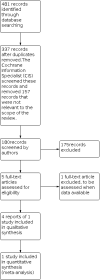

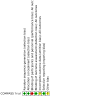
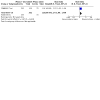
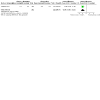
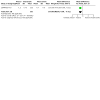
Update of
References
References to studies included in this review
COMPASS Trial {published data only}
-
- Landry T, Clasby G. Ocular hypotensive medication use in patients undergoing combined cataract surgery and supraciliary micro-stent implantation for open-angle glaucoma. Investigative Ophthalmology and Visual Science 2017;58(8):ARVO E-abstract 4920.
-
- Lass J, Benetz BA, He J, Hamilton C, Von Tress M, Dickerson J, et al. Corneal endothelial cell low and morphometric changes 5 years after phacoemulsification with or without Cypass microstent. American Journal of Ophthalmology 2019;208:211-8. - PubMed
-
- NCT01085357. Study of an implantable device for lowering intraocular pressure in glaucoma patients undergoing cataract surgery (COMPASS). clinicaltrials.gov/ct2/show/NCT01085357 (first received 20 October 2016).
-
- Reiss G, Clifford B, Vold S, He J, Hamilton C, Dickerson J, et al. Safety and effectiveness of Cypass supraciliary microstent in primary open angle glaucoma: 5-year results from the COMPASS XT study. American Journal of Ophthalmology 2019;208:219-25. - PubMed
-
- Vold S, Ahmed II, Craven ER, Mattox C, Stamper R, Packer M, et al. Two-year COMPASS trial results: supraciliary microstenting with phacoemulsification in patients with open-angle glaucoma and cataracts. Ophthalmology 2016;123(10):2103-12. - PubMed
References to ongoing studies
NCT01461278 {published data only}
-
- NCT01461278. Multicenter investigation of the Glaukos® suprachoroidal stent model G3 In conjunction with cataract surgery. clinicaltrials.gov/ct2/show/NCT01461278 (first received 28 October 2011).
Additional references
AGIS 2000
-
- AGIS. The Advanced Glaucoma Intervention Study (AGIS): 7. The relationship between control of intraocular pressure and visual field deterioration. American Journal of Ophthalmology 2000;130(4):429-40. - PubMed
Burr 2007
-
- Burr JM, Mowatt G, Hernandez R, Siddiqui MA, Cook J, Lourenco T, et al. The clinical effectiveness and cost-effectiveness of screening for open angle glaucoma: a systematic review and economic evaluation. Health Technology Assessment 2007;11(41):1-190. - PubMed
CNTG Study Group 1998
-
- CNTG Study Group. Comparison of glaucomatous progression between untreated patients with normal-tension glaucoma and patients with therapeutically reduced intraocular pressures. American Journal of Ophthalmology 1998;126(4):487-97. - PubMed
Covidence [Computer program]
-
- Veritas Health Innovation Covidence. Melbourne: Veritas Health Innovation, accessed 3 September 2020. Available at www.covidence.org.
FDA 2018
-
- FDA: US Food and Drug Administration. UPDATE: potential eye damage from Alcon CyPass micro-stent used to treat open-angle glaucoma: FDA safety communication. www.fda.gov/MedicalDevices/Safety/AlertsandNotices/ucm624283.htm (accessed 19 August 2019).
Francis 2011
-
- Francis BA, Singh K, Lin SC, Hodapp E, Jampel HD, Samples JR, et al. Novel glaucoma procedures: a report by the American Academy of Ophthalmology. Ophthalmology 2011;118(7):1466-80. - PubMed
Friedman 2009
-
- Friedman DS, Okeke CO, Jampel HD, Ying GS, Plyler RJ, Jiang Y, et al. Risk factors for poor adherence to eyedrops in electronically monitored patients with glaucoma. Ophthalmology 2009;116(6):1097-105. - PubMed
Gedde 2012
Glanville 2006
GRADEpro [Computer program]
-
- GRADE Working Group, McMaster University GRADEpro GDT. Version accessed 23 April 2020. Hamilton (ON): GRADE Working Group, McMaster University. Available at gradepro.org.
Heijl 2002
-
- Heijl A, Leske MC, Bengtsson B, Hyman L, Bengtsson B, Hussein M, et al. Reduction of intraocular pressure and glaucoma progression: results from the Early Manifest Glaucoma Trial. Archives of Ophthalmology 2002;120(10):1268-79. - PubMed
Higgins 2017
-
- Higgins JPT, Altman DG, Sterne JAC (editors). Chapter 8: Assessing risk of bias in included studies. In: Higgins JPT, Churchill R, Chandler J, Cumpston MS (editors). Cochrane Handbook for Systematic Reviews of Interventions version 5.2.0 (updated June 2017), Cochrane, 2017. Available from training.cochrane.org/handbook/archive/v5.2.
Hu 2021
Ismail 2015
-
- Ismail R, Azuara-Blanco A, Ramsay CR. Outcome measures in glaucoma: a systematic review of Cochrane reviews and protocols. Journal of Glaucoma 2015;24(7):533-8. - PubMed
Ismail 2016
-
- Ismail R, Azuara-Blanco A, Ramsay CR. Consensus on outcome measures for glaucoma effectiveness trials: results from a delphi and nominal group technique approaches. Journal of Glaucoma 2016;25(6):539-46. - PubMed
James Lind Alliance 2013
-
- James Lind Alliance Sight Loss and Vision Priority Setting Partnership. Setting priorities for eye research. www.sightlosspsp.org.uk (accessed prior to 13 September 2017).
Kass 2002
-
- Kass MA, Heuer DK, Higginbotham EJ, Johnson CA, Keltner JL, Miller JP, et al. The Ocular Hypertension Treatment study: a randomized trial determines that topical ocular hypotensive medication delays or prevents the onset of primary open-angle glaucoma. Archives of Ophthalmology 2002;120(6):701-13. - PubMed
King 2013
-
- King A, Azuara-Blanco A, Tuulonen A. Glaucoma. BMJ 2013;346:f3518. - PubMed
King 2018
Kirwan 2013
-
- Kirwan JF, Lockwood AJ, Shah P, Macleod A, Broadway DC, King AJ, et al. Trabeculectomy in the 21st century: a multicenter analysis. Ophthalmology 2013;120(12):2532-9. - PubMed
Lass 2019
-
- Lass J, Benetz BA, He J, Hamilton C, Von Tress M, Dickerson J, et al. Corneal endothelial cell loss and morphometric changes 5 years after phacoemulsification with or without Cypass microstent. American Journal of Ophthalmology 2019;208:211-8. - PubMed
Le 2019
Lichter 2001
-
- Lichter PR, Musch DC, Gillespie BW, Guire KE, Janz NK, Wren PA, et al. Interim clinical outcomes in the Collaborative Initial Glaucoma Treatment study comparing initial treatment randomized to medications or surgery. Ophthalmology 2001;108(11):1943-53. - PubMed
Okeke 2009
-
- Okeke CO, Quigley HA, Jampel HD, Ying GS, Plyler RJ, Jiang Y, et al. Adherence with topical glaucoma medication monitored electronically. The Travatan Dosing Aid study. Ophthalmology 2009;116(2):191-9. - PubMed
Otarola 2020
Peters 2013
-
- Peters D, Bengtsson B, Heijl A. Lifetime risk of blindness in open-angle glaucoma. American Journal of Ophthalmology 2013;156(4):724-30. - PubMed
Piltz 2000
-
- Piltz J, Gross R, Shin DH, Beiser JA, Dorr DA, Kass MA, et al. Contralateral effect of topical beta-adrenergic antagonists in initial one-eyed trials in the ocular hypertension treatment study. American Journal of Ophthalmology 2000;130(4):441-53. - PubMed
Quigley 2006
Radcliffe 2010
Reiss 2019
-
- Reiss G, Clifford B, Vold S, He J, Hamilton C, Dickerson J, et al. Safety and effectiveness of Cypass supraciliary microstent in primary open angle glaucoma: 5-year results from the COMPASS XT study. American Journal of Ophthalmology 2019;208:219-25. - PubMed
Review Manager 2020 [Computer program]
-
- The Cochrane Collaboration Review Manager (RevMan). Version 5.4. The Cochrane Collaboration, 2020.
Toris 1999
-
- Toris CB, Yablonski ME, Wang YL, Camras CB. Aqueous humor dynamics in the aging human eye. American Journal of Ophthalmology 1999;127(4):407-12. - PubMed
References to other published versions of this review
Publication types
MeSH terms
LinkOut - more resources
Full Text Sources
Other Literature Sources
Miscellaneous

